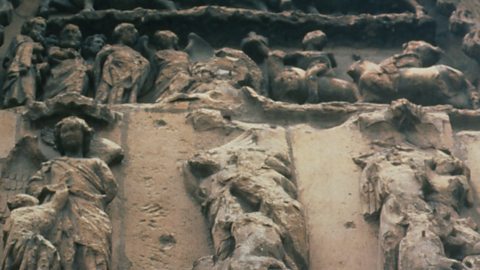Atmospheric pollutants
Carbon and soot are not the only atmospheric pollutantA toxic chemical or object that causes damage to the land, air or water. produced by the combustionThe process of burning by heat. of hydrocarbonA compound that contains hydrogen and carbon only. fuelMaterial that is used to produce heat, like coal, oil or gas.. Sulfur dioxide and oxideCompound containing oxygen or oxide ions. of nitrogen may be produced too.
Sulfur dioxide
Many hydrocarbon fuels naturally contain sulfur impurityA substance, usually unwanted, that is present in another substance.. When the fuels are burned, the sulfur oxidiseChemical substances are oxidised by the addition of oxygen, removal of hydrogen or the removal of electrons. to form sulfur dioxide gas:
Sulfur + oxygen → sulfur dioxide
S(s) + O2(g) → SO2(g)
Sulfur dioxide dissolveWhen a substance breaks up and mixes completely with a solvent to produce a solution. in water in the clouds to form sulfurous acid:
SO2(g) + H2O(l) → H2SO3(aq)
Oxygen in the air reacts with sulfurous acid to form sulfuric acid:
H2SO3(aq) + ½O2(g) → H2SO4(aq)
The mixtureTwo or more substances that are not joined together. The substances can be elements, compounds, or both. of the two acidSubstance producing more hydrogen ions than hydroxide ions when dissolved in water. falls from the clouds as acid rainRain that contains dissolved acidic gases such as nitrogen oxides and sulfur dioxide..
Question
Explain why sulfurous acid is oxidised when it forms sulfuric acid.
Sulfurous acid reacts with oxygen and gains oxygen in the reaction.
Effects of acid rain
Acid rain damages the natural and built environmentThe immediate surroundings in which people live, or the natural world such as the land, air or water.. For example, it:
- reacts with metalShiny element that is a good conductor of electricity and heat, and which forms basic oxides. and rocks such as limestoneA type of sedimentary rock., weakening and damaging buildings and statues
- damages plants and trees, making them lose their leaves and die
- makes rivers and lakes too acidicHaving a pH lower than 7. for some aquatic life to survive

Oxides of nitrogen
High temperatures are reached when fuels are burned in engines. At these high temperatures, nitrogen and oxygen from the air can react together to produce oxides of nitrogen. For example:
Nitrogen + oxygen → nitrogen monoxide
N2(g) + O2(g) → 2NO(g)
Nitrogen monoxide gas can be oxidised further in air to produce nitrogen dioxide gas, NO2.
These two oxides of nitrogen are together represented by the formula NOx. They are atmospheric pollutants. They can react in sunlight with other substances to produce a hazy, harmful smogA type of air pollution that appears as a visible smoky fog which is very harmful to health.. Nitrogen dioxide is toxicPoisonous.. It can cause bronchitisInflammation of the bronchi and bronchioles. and other lung diseases. It also dissolves in water in the clouds, forming an acidic solution that contributes to acid rain.
Question
Write a balanced equation for the reaction between nitrogen monoxide and oxygen, forming nitrogen dioxide. Include state symbols in your answer.
2NO(g) + O2(g) → 2NO2(g)